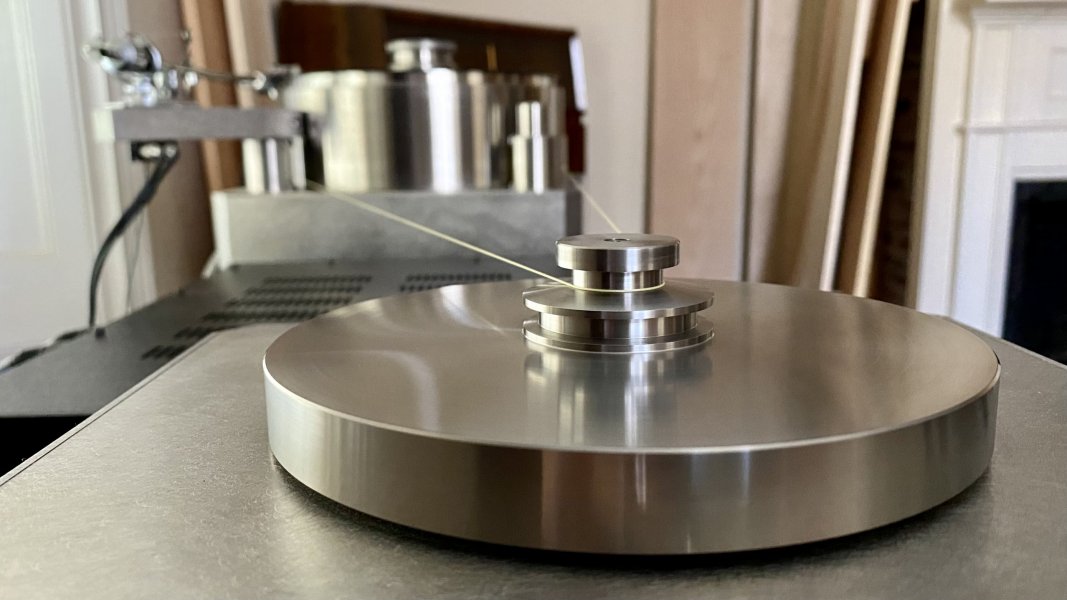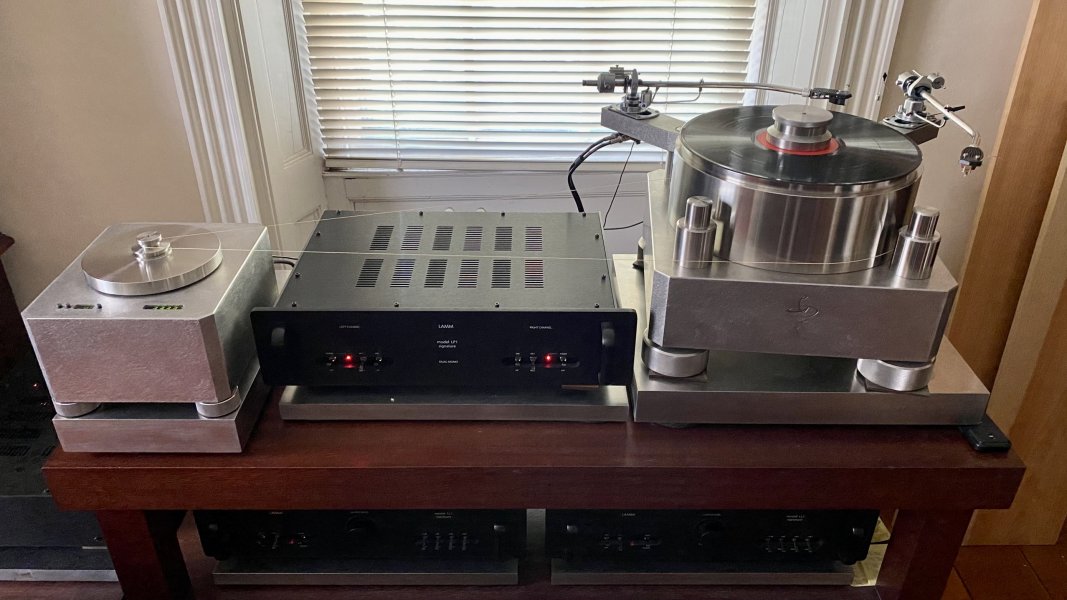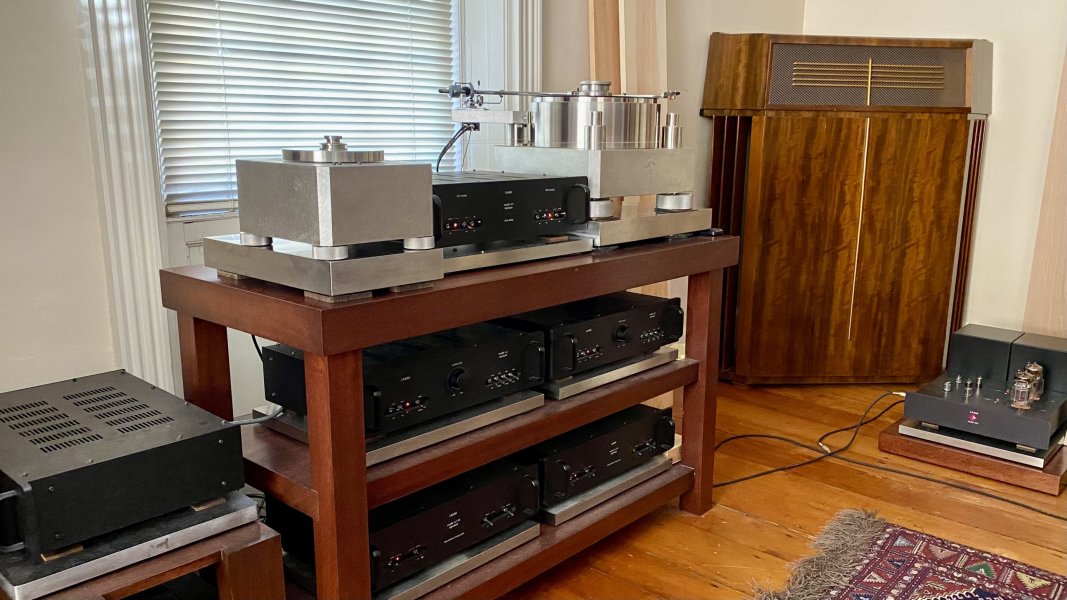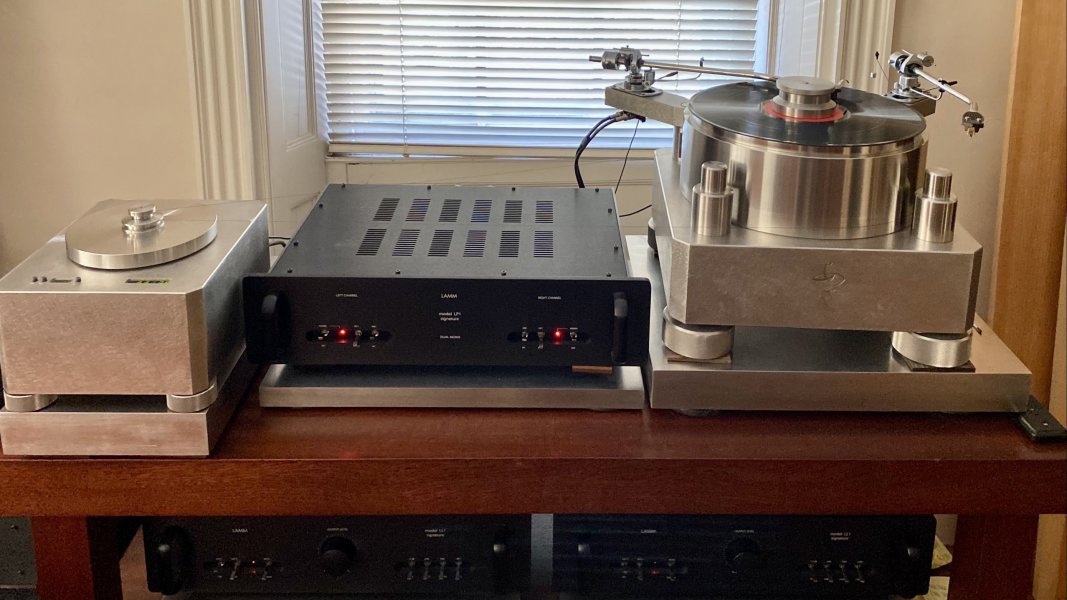I learned a lot from my experiments a year ago with elastic belt to non elastic belt to dental floss to different non stretch threads. They all changed the sound I heard. I prefer the thin, strong special thread that ddk sent me. I concluded that the connection between motor pulley and platter is critical to the sound. The less influence the motor has on the platter, the better, at least in my case with a very high mass platter with very low rotational friction.
To further this observation and increase my knowledge on the subject, I recent embarked on a series of experiments with thread tension and thread length. I observe changes in speed, both in terms of absolute speed accuracy (33.333RPM) and in speed consistency (+/- 00.002RPM), with very small changes in motor position. This is because a slight change in position (distance between motor pulley and platter) changes the tension of the thread. With any change in thread tension, I observe a change in speed. To compensate, I adjust the speed control on the motor to reach the right combination of speed and tension.
The looser the tread, the better the sound, at least in my application. My conclusion is that even though the motor is isolated from the turntable base and platter, some small resonance travels along the tread to reach the platter. In my case, the platter will free spin for 30 minutes before stopping, so very minimal influence from the motor is necessary to maintain constant and consistent speed. The RoadRunner tachometer readout is to three places. It is measured only once per revolution, but there is no control on the motor based on this readout. I can see exactly how much changes in thread tension affect speed. And it is audible.
Encouraged by what I heard with lower thread tension, I decided to adjust the length of the thread. My separate motor unit makes it easy to move the driving pulley and alter its distance from the platter. Thread length, as well as its tension, affects its resonant frequency, and thus the influence of the motor on the platter. This is audible. My thread is now loose and long and after some adjustments to the tension and motor speed, I have accurate and consistent speed again.
Even though the motor unit itself is isolated and sits on a massive steel plate which itself is isolated from the separate and differently isolated steel plate the turntable bass sits on, the further distance seems to reduce the noise from the motor reaching the platter through the supporting rack. The steel plate supporting the phono stage further damps the heavy top shelf of the rack. The loose, long thread, also reduces the motor's noise and influence further by reducing the resonances travel along its length.
The resulting sound is more natural, especially in the bass. This then affects higher frequencies in terms of clarity. The sound opens up, and with the lower noise, I hear more information. I am really pretty surprised at how much of a difference this makes.
I ran into an interesting thing though as I moved the motor away from the platter. The thread angle changed, resulting in the thread rubbing against two of the arm posts. I wondered if this affected the sound because of the friction against the steel posts and angle change. The tension was loose and the thread was thin, but I moved the motor and rotated the turntable so that the thread no longer rubbed against the arm posts. Sure enough, this was audible too. In the photo below you can just see how the turntable is rotated and that I moved the motor to the front of the top shelf so the thread would have a clear path.
Yesterday, I replaced the cheap sewing thread I tried for the longer thread length with the reinforced thread ddk sent me. I had been using this thread when the motor was next to the turntable. ddk tried many different threads and settled on one. It is larger in diameter and soft but very strong with grip. I can run it looser than the sewing thread to maintain the same speed.
The result is that the sound opens up even more. It is more relaxed and natural sounding. Timbre is improved. One hears more of the individual notes. Overall clarity is also better. This is one more incremental step toward a more realistic listening experience.
Conclusions for my high mass/thread drive turntable design:
1. I prefer thread to stretch and non stretch belts. Thread type is audible.
2. The looser the thread, the better, as long as there is no slippage and speed accuracy and stability are maintained.
3. A longer thread sounds better than a shorter one as long as speed is maintained.
4. A clear, unobstructed path for the thread with contact only between motor pulley and platter is audible.
5. Separating the motor unit from the turntable base reduces noise migrating to the platter and/or armboard. Separate platforms are better but a stable relationship and support between the two is important.
6. The goal is to minimize the influence of the motor on the platter and arm by careful placement and the type of connection between the two.








